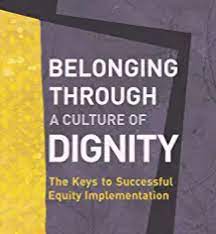Cobb, F. & Krownapple, J. (2019) Belonging Through a Culture of Dignity
Curator

Curator
Article Summary
Authors Introduction to their work
We believe the greatest challenge and responsibility of leaders – especially public servants – is to create and maintain environments where each person belongs and thrives.
In recent history, school districts and other organizations have pursued this goal through initiatives such as diversity, equity, and inclusion. However, implementing such initiatives can be really tough and lead to more conflict. Many leaders care deeply about their community but aren’t quite sure how to take accountability for providing each person the conditions needed to thrive. Some leaders fear they might even make things worse if they try.
Organizations often turn to buzzwords, engage in counterproductive actions, avoid addressing the conflict, or believe the problem exists in other communities — not theirs. However, indignity is everywhere and belonging challenges exist in every community and relationship.
We all know what it feels like to belong. We also know what it is like to question your belonging and feel like you’re being perceived as the other – not part of the in-group. Even though we all have access to those types of experiences, the truth is that we don’t all have to experience them with the same frequency and volume. That is the problem for organizations dedicated to providing equal opportunity and access.
Because belonging precedes achievement and is the primary activator of engagement, people who lack belonging can’t fully engage and, inevitably, underperform. Biology and social science have helped us understand the incredible negative impact of not belonging. People in a community who experience less belonging than other community members simply don’t have fair access to opportunity. It is impossible.
We know how difficult it is to foster a culture of real belonging. That’s why we wrote Belonging Through a Culture of Dignity — to help. From engaging with the content, educational leaders can gain clarity of how to bring a community together and create environments within which each person thrives. The key is dignity. Drawing from Donna Hicks’s (2017) groundbreaking work, we demystify that word and define specific actions. As educators, we should all know precisely what treating people with dignity means (as well as how to measure it). So that schools don’t leave belonging and dignity to chance, we recommend institutionalizing specific structures and processes for accountability for healthy workplace and school cultures that honor dignity and, thus, nurture belonging.
Resources
20 June 2023